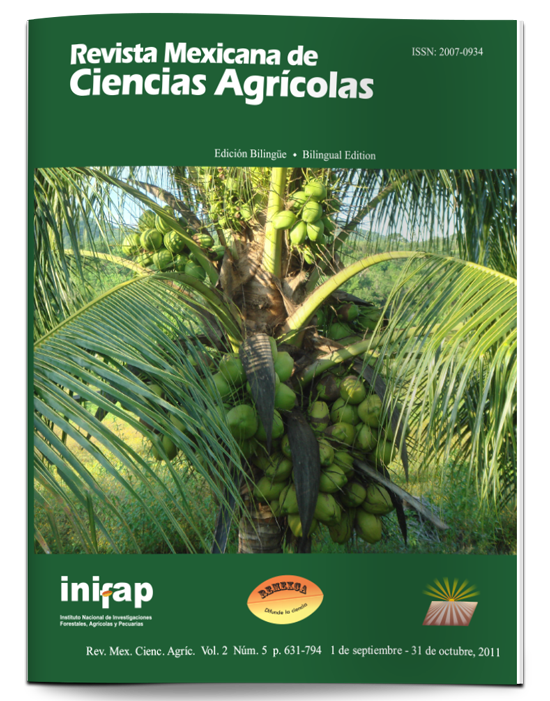VALUATION UNDER RAINFED CONDITIONS OF DURUM WHEAT VARIETIES GENERATED FOR IRRIGATION
DOI:
https://doi.org/10.29312/remexca.v2i5.1623Keywords:
bread wheat, durum wheat, industrial quality, irrigation and rainfedAbstract
In order to know the possibilities of producing crystalline wheat with good yields and quality in rainfed areas of High Valleys of Mexico, an experiment was established in four different production environments, where wheat varieties Topacio C98, Júpare C2001 and Gema C2004 were tested and compared with bread wheat varieties Rebeca F2000 and Tlaxcala F2000, which were developed for rainfed conditions; genotypes were evaluated with and without fungicide application. The results indicate that the bread wheat varieties overcame for its agronomic and yield characteristics to the durum wheat in all the testing sites, obtaining higher yields up to 20% (1 200 kg ha-1). Bread wheat had higher yields and was the best option in evaluated favorable production environments and the best alternative in critical environments. Due to its agronomic performance and yield, Júpare C2001 was the durum wheat with better response and adaptation in the tested environments. The industrial quality of durum wheat in any condition, allowed obtaining suitable semolina for the manufacture of good quality products, but its production under rainfed conditions could be an alternative for using it as a flour mixtures improver.
Downloads
Downloads
Published
How to Cite
Issue
Section
License
The authors who publish in Revista Mexicana de Ciencias Agrícolas accept the following conditions:
In accordance with copyright laws, Revista Mexicana de Ciencias Agrícolas recognizes and respects the authors’ moral right and ownership of property rights which will be transferred to the journal for dissemination in open access. Invariably, all the authors have to sign a letter of transfer of property rights and of originality of the article to Instituto Nacional de Investigaciones Forestales, Agrícolas y Pecuarias (INIFAP) [National Institute of Forestry, Agricultural and Livestock Research]. The author(s) must pay a fee for the reception of articles before proceeding to editorial review.
All the texts published by Revista Mexicana de Ciencias Agrícolas —with no exception— are distributed under a Creative Commons License Attribution-NonCommercial 4.0 International (CC BY-NC 4.0), which allows third parties to use the publication as long as the work’s authorship and its first publication in this journal are mentioned.
The author(s) can enter into independent and additional contractual agreements for the nonexclusive distribution of the version of the article published in Revista Mexicana de Ciencias Agrícolas (for example include it into an institutional repository or publish it in a book) as long as it is clearly and explicitly indicated that the work was published for the first time in Revista Mexicana de Ciencias Agrícolas.
For all the above, the authors shall send the Letter-transfer of Property Rights for the first publication duly filled in and signed by the author(s). This form must be sent as a PDF file to: revista_atm@yahoo.com.mx; cienciasagricola@inifap.gob.mx; remexca2017@gmail.
This work is licensed under a Creative Commons Attribution-Noncommercial 4.0 International license.



